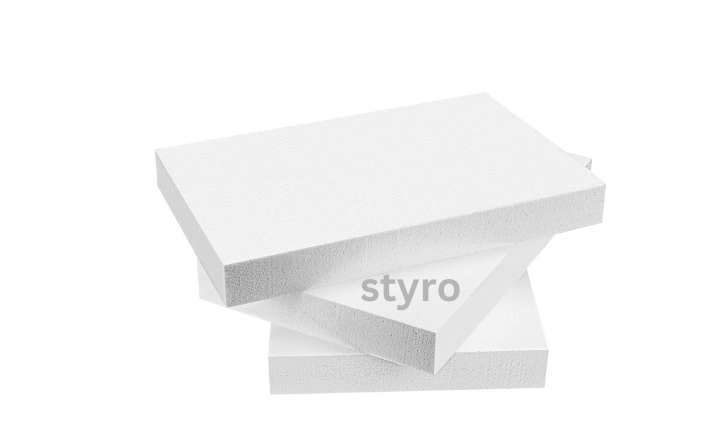Introduction
When you hear the word “Styro,” chances are, you’re thinking about that crinkly white foam often found in takeout containers or as packing peanuts cushioning your online orders. But there’s a lot more to Styro than meets the eye! From its origins as a humble synthetic material to the innovative eco-friendly strides being made today, Styro has quite the backstory. And guess what? It’s not just about cheap insulation or disposable cups anymore!
In this article, we’ll dive into the world of Styro, exploring its history, modern uses, environmental challenges, and even some groundbreaking solutions. Whether you’re curious about how it came to be or wondering how Styro is adapting to our greener future, we’ve got you covered.
What Exactly is Styro?
Styro, short for Styrofoam, is technically a brand name trademarked by Dow Chemical for a material known as extruded polystyrene foam (XPS). Over time, the term “Styro” has become synonymous with all types of polystyrene foam, though technically, the everyday products you encounter—like coffee cups and takeout containers—are made of expanded polystyrene (EPS), not Dow’s original XPS.
A Quick History Lesson
Styro was invented in the 1940s by Dow Chemical when they developed a method to extrude polystyrene to form a closed-cell foam material. Originally, this lightweight, durable foam found its way into insulation and buoyancy devices like life rafts and floatation devices. Over the years, it quickly gained popularity for packaging, disposable products, and even construction!
Why Is Styro Everywhere?
It’s lightweight, easy to mold, and has great insulating properties—these qualities are why Styro has been a hit in industries across the board.
Common Uses of Styro
- Packaging: Those annoying little peanuts? Yep, that’s Styro at work. It’s used to protect fragile items during shipping.
- Foodservice: Think about disposable coffee cups, takeout containers, and trays.
- Construction: Styro’s insulating properties make it popular for insulating walls and roofs in homes and commercial buildings.
- Crafting & DIY Projects: It’s easy to cut, shape, and glue, making it a go-to for DIY enthusiasts.
It’s hard to believe that a material developed for life rafts is now keeping your leftovers warm!
The Dark Side: Environmental Impact
Okay, let’s get real for a second. As convenient as Styro is, it’s also infamous for its environmental footprint. You’ve probably heard the stats: it takes hundreds—if not thousands—of years to break down. Styro doesn’t biodegrade; instead, it photodegrades, breaking into tiny bits that can harm wildlife and pollute our oceans.
The Trouble with Recycling Styro
Recycling Styro is tricky. Due to its lightweight and bulky nature, it’s not economically viable for most recycling programs. Styro is made of about 95% air, so collecting, transporting, and processing it consumes more resources than recycling denser materials like aluminum or glass.
Common Environmental Problems Associated with Styro
- Wildlife Impact: Animals, especially marine life, often mistake Styro bits for food, which can lead to fatal consequences.
- Landfill Overflow: Styro takes up significant space in landfills since it doesn’t compact easily and doesn’t break down for centuries.
- Toxicity in Production: The production process of Styrofoam emits harmful chemicals into the atmosphere, contributing to pollution and potential health risks for workers.
With all these challenges, it’s no surprise that many cities and countries are pushing for Styrofoam bans in an effort to reduce plastic pollution.
Eco-Friendly Alternatives to Styro
So, what’s being done to address the Styro problem? Thankfully, there are several innovative solutions already making headway!
1. Plant-Based Alternatives
Companies are developing biodegradable alternatives made from cornstarch, mushrooms, and other renewable resources. These plant-based materials mimic the properties of Styros without the environmental downsides. Some can even compost in your backyard!
2. Recycling Programs
Though not widespread, there are niche recycling facilities that handle Styrofoam, turning it into products like picture frames, insulation, or even new foam products. While not perfect, it’s a step in the right direction.
3. Government Regulations
Many regions are implementing bans on single-use Styrofoam products, encouraging businesses to adopt more sustainable packaging options. For instance, places like New York City, San Francisco, and several countries in Europe have enforced strict Styro bans.
The Future of Styro: Can It Go Green?
There’s still hope for Styros to redeem itself! With innovations like chemical recycling and new eco-friendly materials on the horizon, Styrofoam might not be as villainous in the future. In fact, some companies are exploring how to make Styros fully recyclable or even biodegradable through advanced technologies like enzyme breakdown.
FAQs About Styro
Q1: Can Styros be reused?
Yes! While it’s not recyclable in most places, you can reuse Styrofoam for various purposes—craft projects, insulation, or even to store delicate items.
Q2: Why is Styros banned in some places?
Styros is often banned due to its environmental impact. It’s difficult to recycle, takes centuries to degrade, and poses risks to wildlife when it ends up in nature.
Q3: What is the difference between Styrofoam and other types of foam?
Styrofoam (XPS) is a specific brand and type of foam insulation, whereas the foam cups and containers most people use are made of expanded polystyrene (EPS), a different type of polystyrene foam.
Q4: Are there any biodegradable forms of Styrofoam?
Not exactly “Styrofoam,” but there are biodegradable alternatives made from materials like cornstarch and mushrooms that mimic Styro’s properties.
Conclusion
Styros has been an unsung hero of the industrial world for decades, but it’s also faced increasing scrutiny over its environmental consequences. While the lightweight, versatile material has revolutionized packaging, insulation, and many other industries, its environmental impact is a significant drawback. However, with modern innovations and alternatives in the works, the Styros we know today may soon evolve into something much greener.
